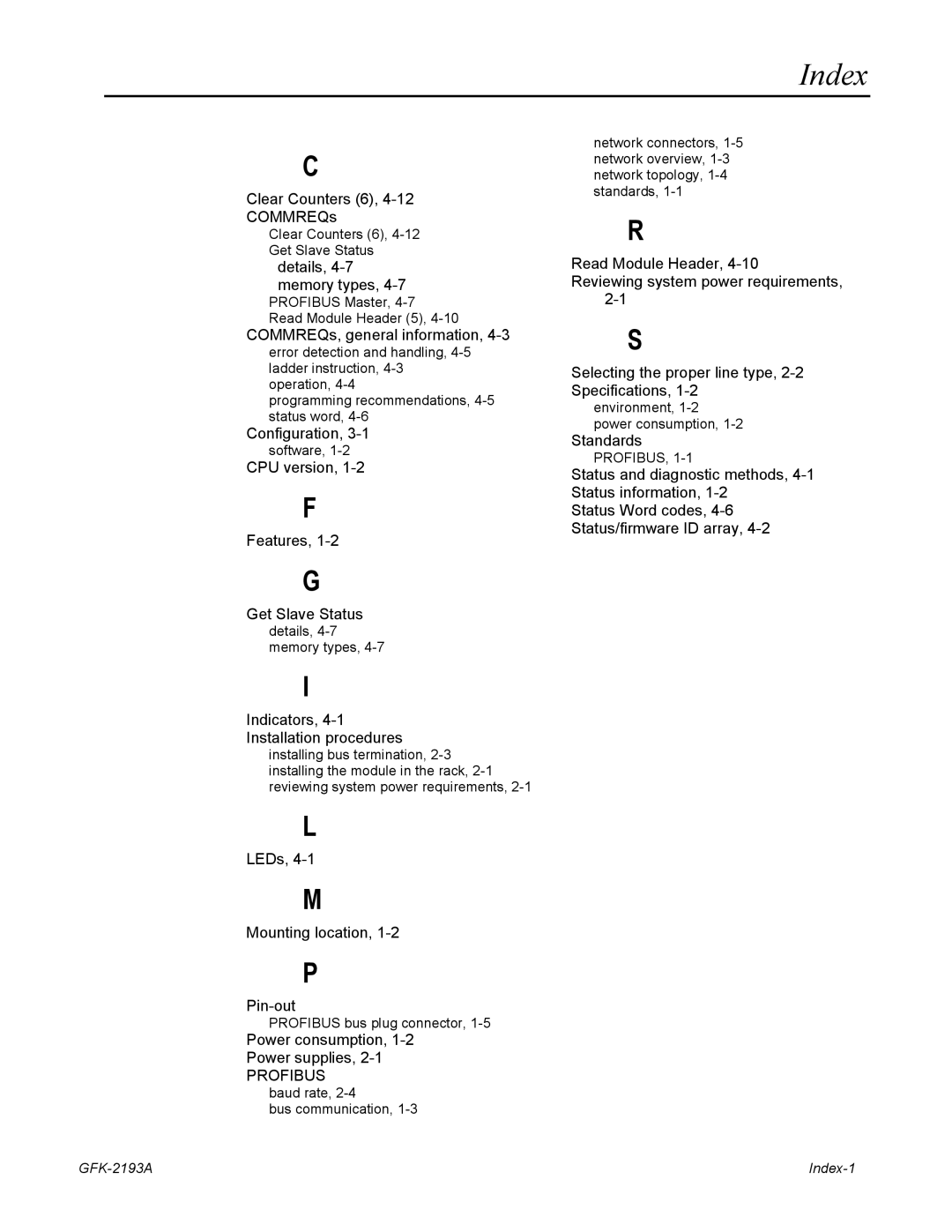GFK-2193A specifications
The GE GFK-2193A is a versatile and powerful programmable logic controller (PLC) designed for industrial automation applications. With its robust construction and advanced features, the GFK-2193A is ideal for industries that demand high reliability and flexibility in their control systems.One of the standout features of the GE GFK-2193A is its processing power. It is equipped with a high-speed CPU that can handle complex tasks and large volumes of data efficiently. This allows for real-time decision-making and control, making it suitable for critical applications where timing and accuracy are paramount. The processing speed is complemented by a multitasking capability, enabling the controller to manage multiple processes simultaneously without a drop in performance.
The GFK-2193A also boasts an extensive range of input and output options. It supports a variety of digital and analog I/O modules, allowing for seamless integration with different sensors, actuators, and devices. This flexibility makes it easy to customize the system according to specific operational needs, whether it's for small-scale automation or extensive industrial setups.
In terms of communication capabilities, the GE GFK-2193A includes support for multiple industrial communication protocols. This includes Ethernet, Modbus, and Profibus, among others, ensuring compatibility with a wide array of devices and systems. The controller's ability to communicate effectively helps facilitate data exchange, enabling better coordination and monitoring across different components of an automation system.
Another significant feature of the GE GFK-2193A is its programming environment. It utilizes the popular Ladder Logic programming language, which is widely regarded for its ease of use and efficiency. Additionally, the controller supports other programming languages, like Function Block Diagram and Structured Text, providing users with the flexibility to choose the most suitable method for their application.
The durability of the GFK-2193A is another remarkable characteristic. Designed to withstand harsh industrial environments, it features robust housing and components, making it resistant to dust, moisture, and temperature fluctuations. This ensures long-lasting performance with minimal maintenance needs, enhancing overall operational efficiency.
In summary, the GE GFK-2193A is a comprehensive solution for industrial automation that combines processing power, flexibility in I/O configurations, advanced communication capabilities, and a user-friendly programming environment. Its robust construction ensures reliability even in challenging conditions, making it a trusted choice for industries looking to enhance their automation processes.
